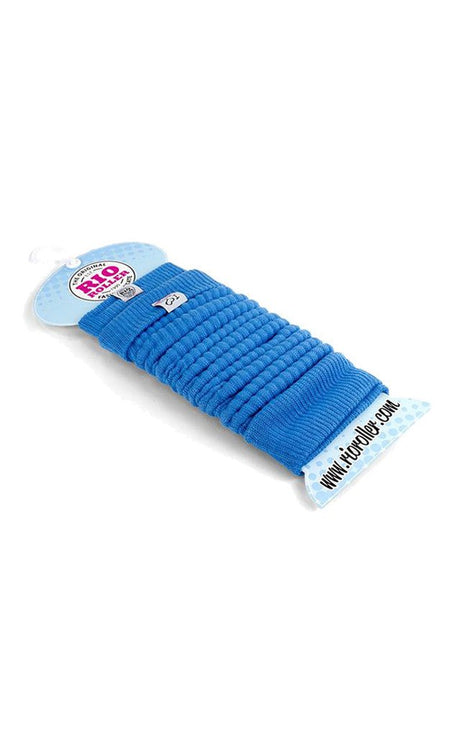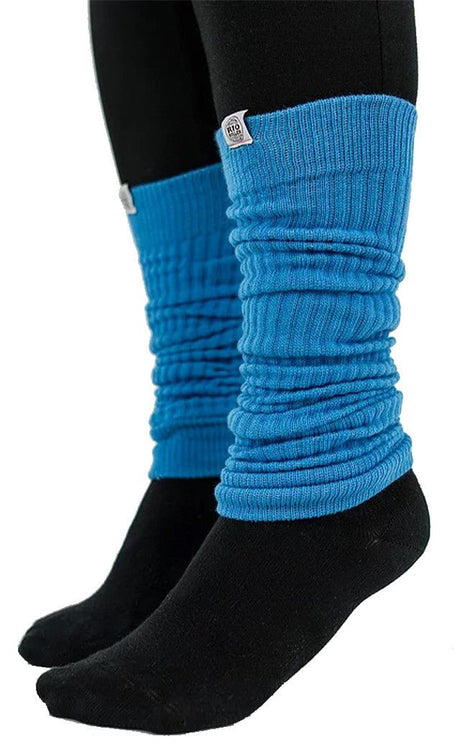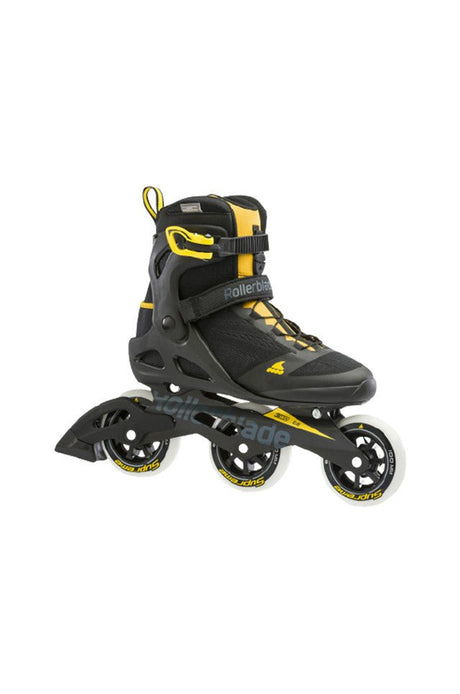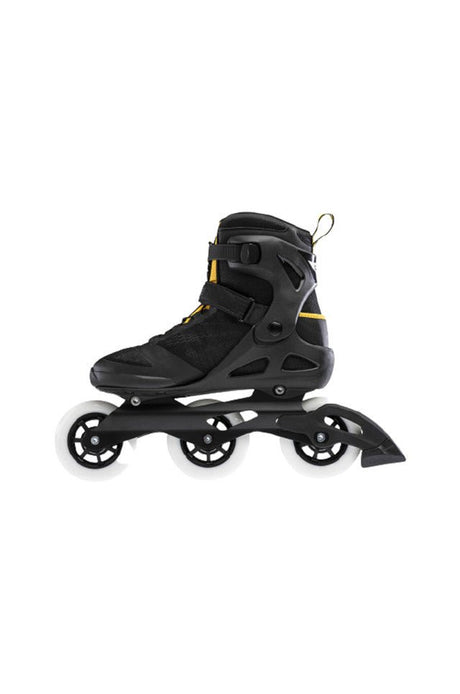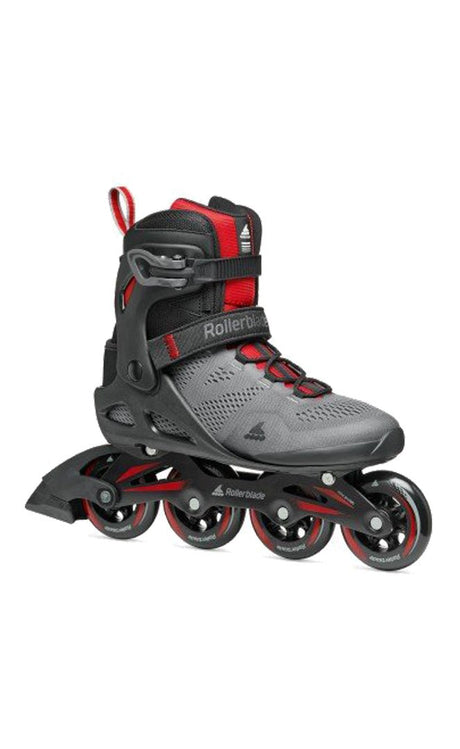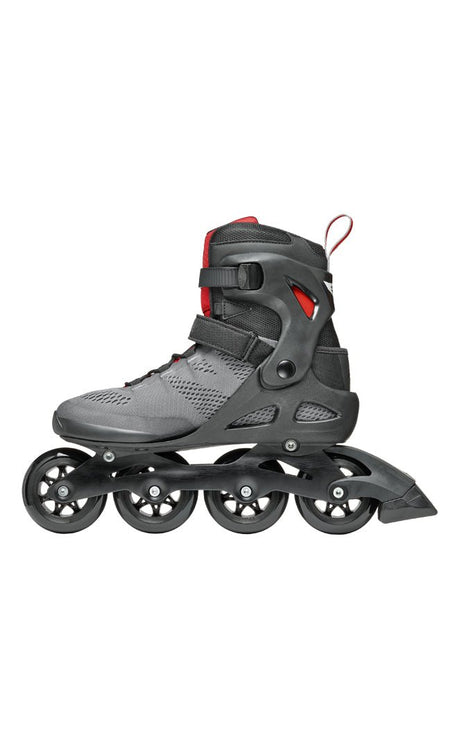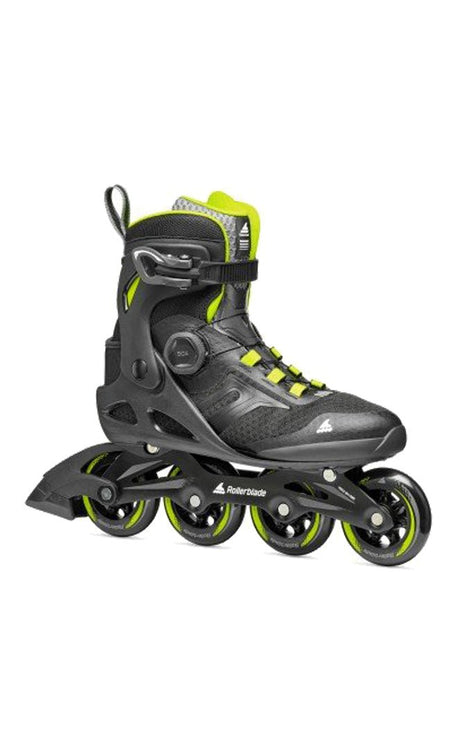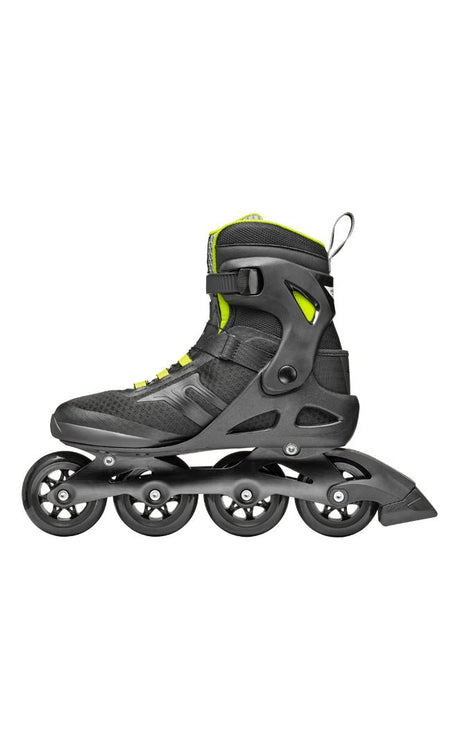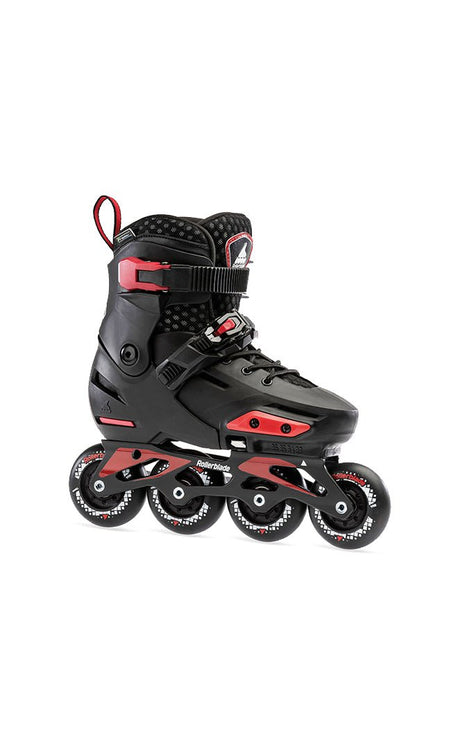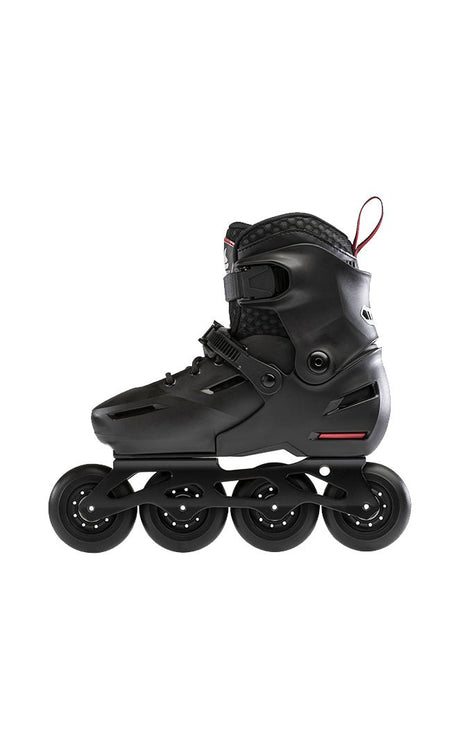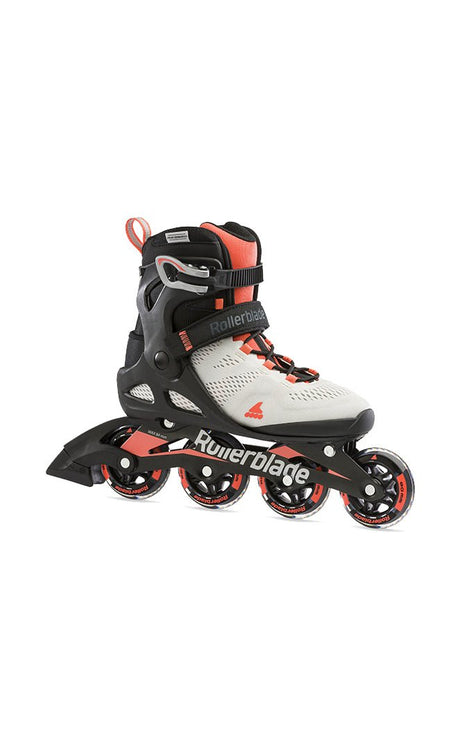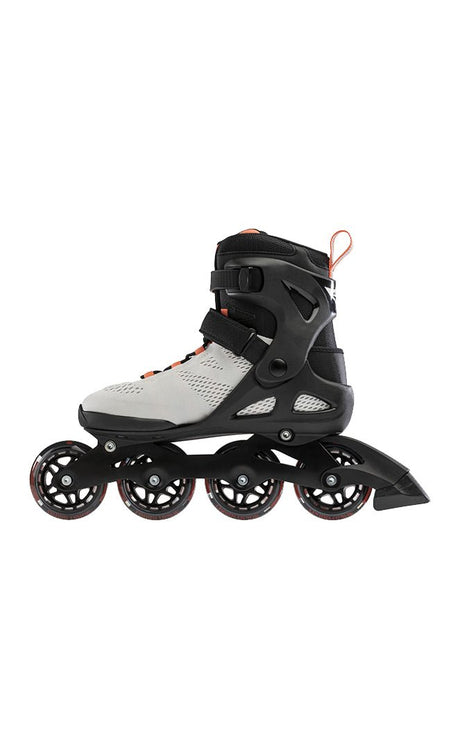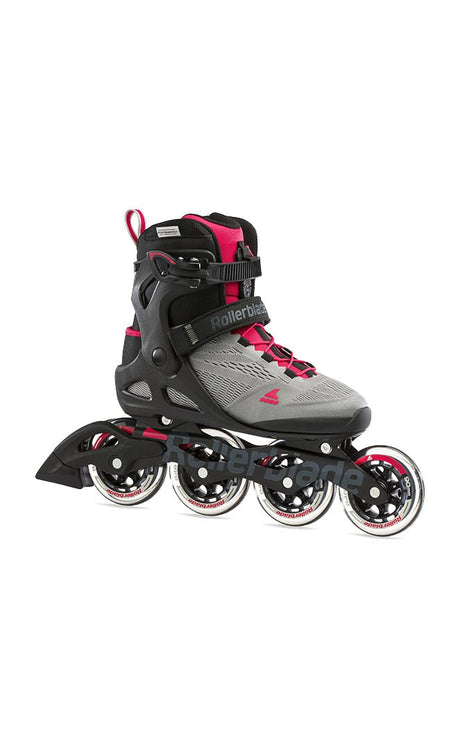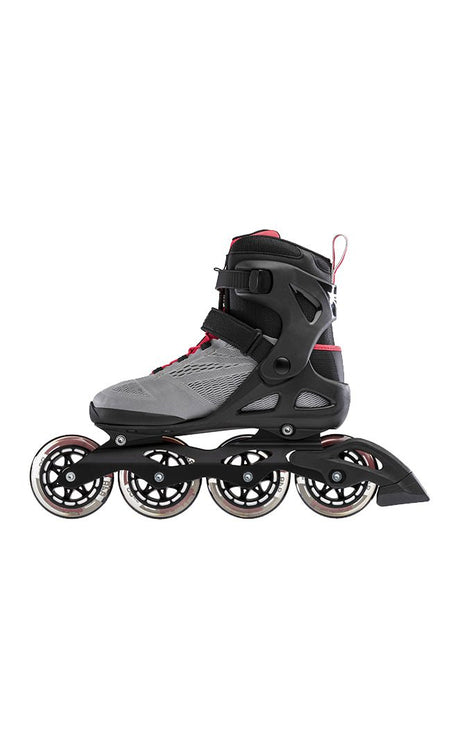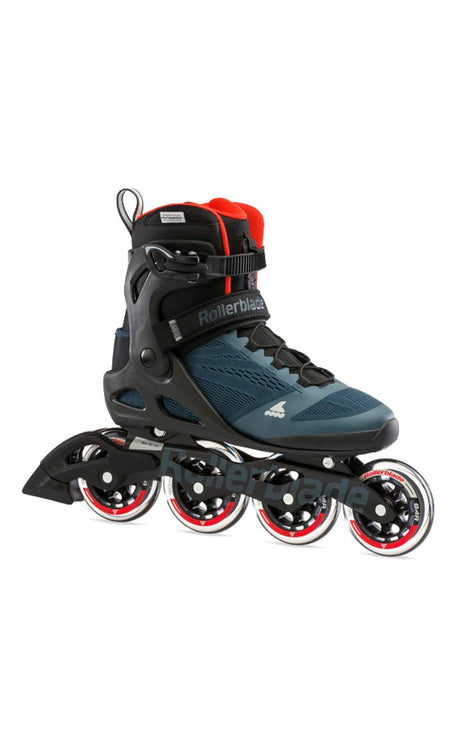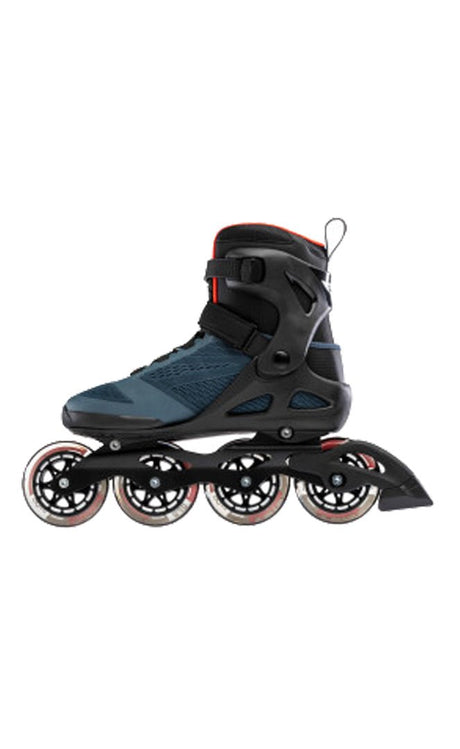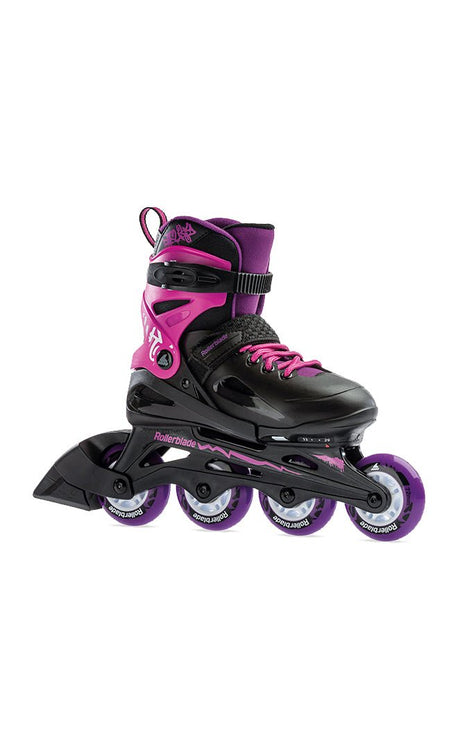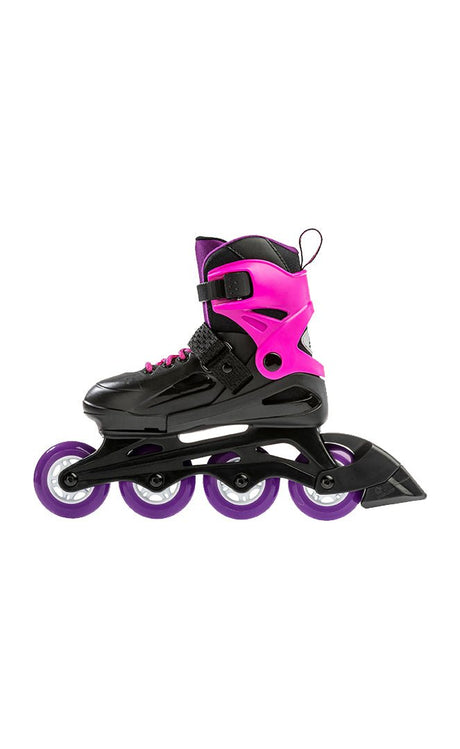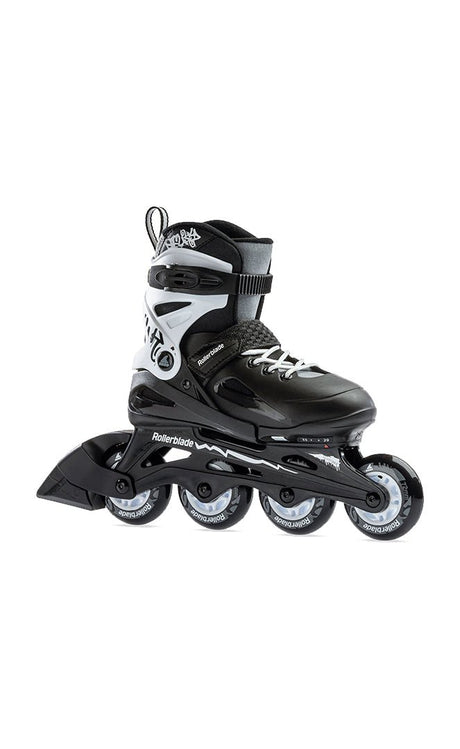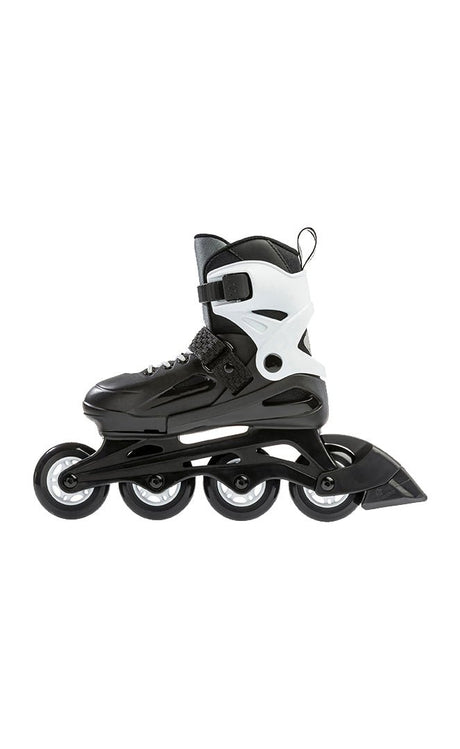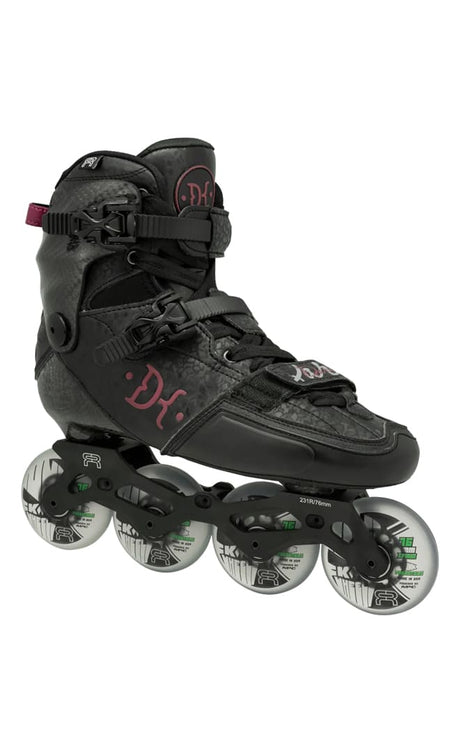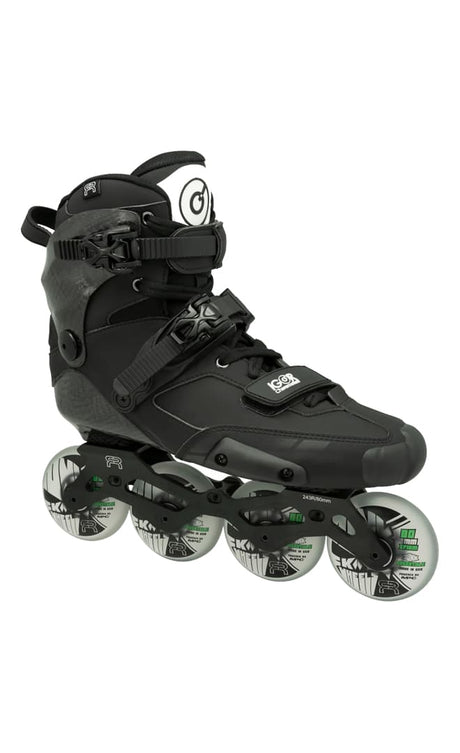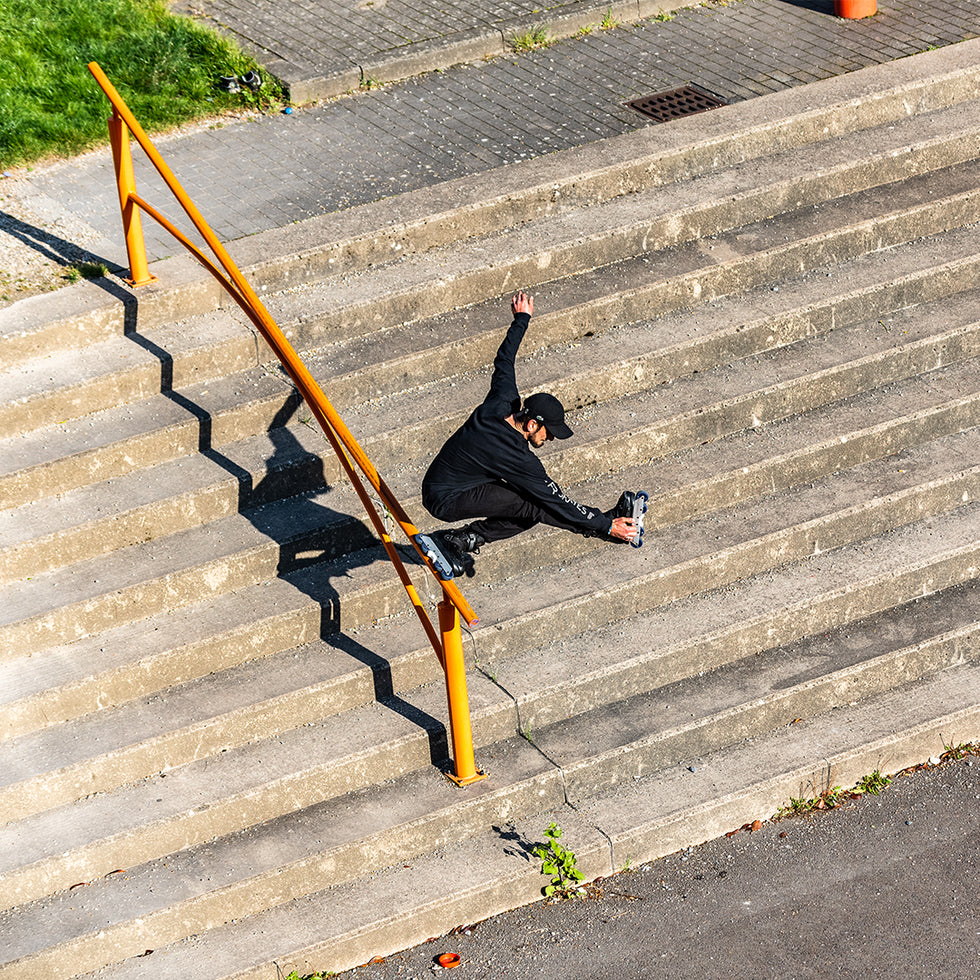
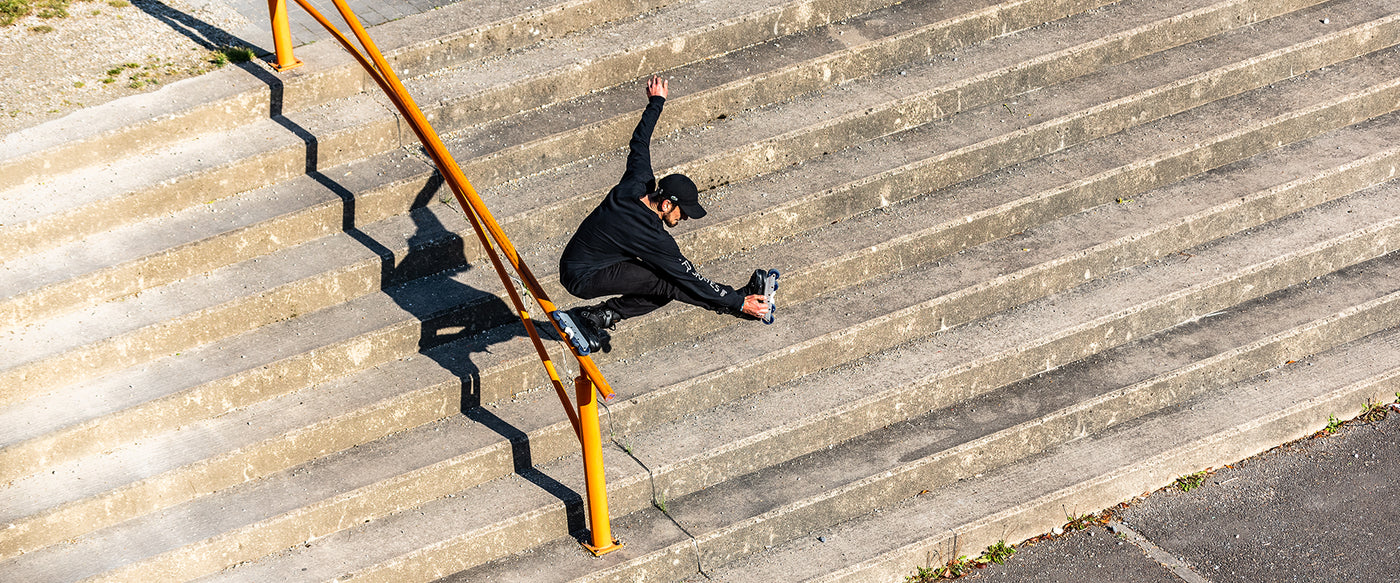
How to choose the pair of roller skates that suits you best based on the practice?
First of all, let's look together at the anatomy of a pair of rollerblades to start on the right foot:
- The spoiler: this is the part that rises to support the ankle. It will be more or less high and more or less rigid depending on the uses, articulated and closed by a buckle or a velcro strap.
- The boot: the part you put on, from the heel to the toes. It can be a full shell with a removable liner, or a semi-soft construction with an integrated liner depending on the models and uses.
- 45° tightening: can be in the form of a velcro strap or a buckle. Important for tightening the instep, its main role is to hold the heel so that it does not lift inside the boot.
- Frame: chassis fixed under the boot, on which the wheels will be attached, more or less long depending on the use and the diameter of the wheels planned.
- Wheel: point of contact with the ground, rollerblade wheels are made of urethane. The hardness of the rubber varies according to the desired cushioning, from the softest (around 80A) to the hardest (at 90A).
- Bearings: parts that fit inside the wheel (2 per wheel) and allow the wheel to turn. They come in different quality and price ranges, with different seals allowing more or less convenient maintenance.

Product title
Anatomy of a pair of rollerblades
On HawaiiSurf, you will find all the elements you need to create your custom pair of roller skates. Whether you are a beginner or an expert, we have everything you need to personalize every part of your skates and perfectly adapt them to your needs.
For outdoor use, whether for a pure stroll or a more sporty hike, fitness and hiking rollers are ideal. They feature a hybrid construction with rigidity around the base and a softer part on the top of the foot. The spoiler is softer to promote flexion over distance and duration.
The first setups with short plates are perfect for leisure stroll use, remaining manageable with a reasonable wheelbase. Fitness rollers with medium plates allow for longer distances, increased comfort, while making a slight compromise on maneuverability and responsiveness.
This is a very urban range of roller skates, characterized by more dynamic skating, including jumps, slides, and various spins sometimes resembling skate-park tricks. To withstand all this, most feature a full plastic shell (with a few exceptions) serving two main purposes: providing more support and resisting potentially more frequent falls (due to the tricks). The spoiler is also higher and stiffer, with the priority being to support the ankle during jumps and provide more precision on the foot placements.
The typical setup is a short frame, offering the best balance between a diameter that allows maneuvering almost anywhere and a fairly short wheelbase for the smoothest and most dynamic handling. These skates are also offered with different wheel diameters, up to 110 mm. This increases comfort, but this option is reserved for hybrid use, with long-distance skating planned, as the height will make some tricks more difficult.
If you want to launch off ramps at the skate park or slide on curbs and other rails in the street, this is the type of roller skate you need! You'll find all kinds of boots here, sometimes with a full shell or a more flexible construction. The most important thing is that they are mounted on a soul-plate, a plate that allows you to lock onto the side of the skate to perform various tricks. The frame will be designed for small wheel diameters, between 56 mm and 64 mm depending on the models, with a wider space in the middle called the H-block, allowing you to lock and slide without touching the wheels.
Avoid for distance or casual use, as the small wheels won't be comfortable once the surface isn't smooth. (However, there are frames with larger diameters adaptable to aggressive skates, which will limit or even prevent performing certain tricks. Consider this as a complementary setup.)
The Formula 1 of roller skating! This is the range designed to tackle marathons and the biggest endurance races, whether over 6 hours or even 24 hours. While some entry-level models sometimes feature a plastic shell, it is mainly carbon fiber and/or glass fiber that dominate. With a focus on performance, this construction optimizes the weight/performance ratio for greater precision and power transmission with every push.
The wheels are at least 100 mm for juniors, and range from 110 mm up to 125 mm in a three-wheel configuration. The skates are mounted on longer frames, less maneuverable, but favoring inertia and offering better torque to last over time!
While you can try freestyle slalom with a pair of fitness or freeskate skates at the beginning, nothing beats a pair optimized to progress and master the most advanced tricks! Generally, you will find boots with integrated liners, providing support and control as close to the foot as possible. With a rigid base, made of plastic or fiber depending on the range, and usually a softer upper, made of leather or nylon around the laces/instep area, for a more precise fit. In most cases, a strap is provided around the toes for maximum control during wheelies.
At the ankle level, there is a more open support to promote mobility during certain tricks, while remaining rigid to maintain precision on every push! The setups will be among the shortest possible and may vary depending on the specialties. In speed slalom, the three-wheel setup has become standard, staying on a short base that favors maneuverability and explosiveness. Meanwhile, in freestyle, the majority will use a four-wheel base (except for some exotic 3x90 options) with diameters of 72 mm, 76 mm, or 80 mm. Pairs dedicated to slalom will have a rocker setup (or "banana" setup in French), the principle being to raise the front and rear wheels to have a rounded ground contact, allowing for much smoother and more maneuverable movement between cones.



















